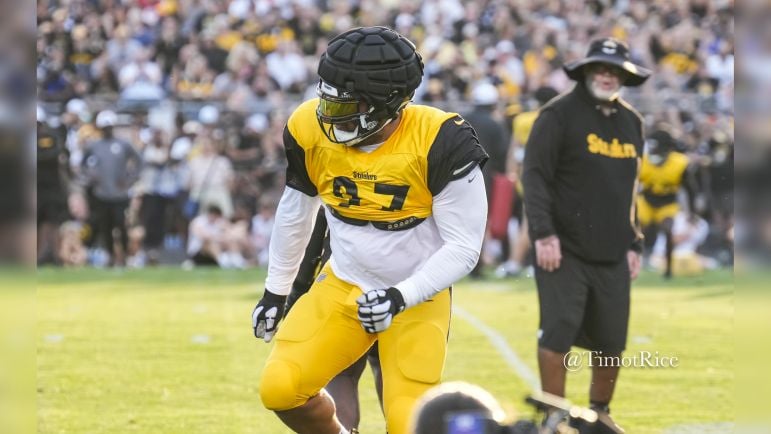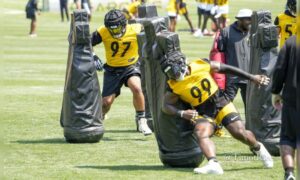Player: DL Cameron Heyward
Stock Value: Up
Reasoning: Cameron Heyward finally got what he wanted all offseason, which is a new contract. He plans to play three more years, and now he has three more years under contract with the Steelers. That is what both sides want, but how he plays this year will ultimately determine how it plays out. Practically speaking, he is on a one-year contract with two one-year club options. But that’s more than he had on the books before, and for him, that’s a win. Plus, as if there were any doubts, he now has his 2024 salary guaranteed.
On Tuesday, the Steelers announced they had signed Cameron Heyward to a new three-year contract. The deal is reportedly worth $45 million and replaces the $16 million he already had on the books. In essence, it is a two-year extension with $29 million in new money, none of which is guaranteed.
At 35 years old, coming off an injury-plagued season, Heyward sought stability. He knew he was bargaining at the worst possible time, but the Steelers still see his value. They had to protect themselves, giving him no new guarantees (practically speaking), however.
Prior to his groin injury last year, Cameron Heyward had made six straight Pro Bowls. There was no question that he was one of the top interior defensive linemen in the league, but can he get back to that place at his age and coming back from injury?
The new deal he signed gives both himself and the Steelers a chance to find out. Even though the Steelers can easily get out of the final two years of Heyward’s contract, they may not want to if he returns to form.
Granted, Heyward will be 37 by the end of this deal, and not many linemen even play at that age. For anybody to play with any distinction at that age is virtually uncharted territory. But if anybody has a shot at shattering the mold for age limits at the position, he does.
As the season progresses, Steelers players’ stocks rise and fall. The nature of the evaluation differs with the time of year, with in-season considerations being more often short-term. Considerations in the offseason often have broader implications, particularly when players lose their jobs, or the team signs someone. This time of year is full of transactions, whether minor or major.
A bad game, a new contract, an injury, a promotion—any number of things affect a player’s value. Think of it as a stock on the market, based on speculation. You’ll feel better about a player after a good game, or worse after a bad one. Some stock updates are minor, while others are likely to be quite drastic, so bear in mind the degree. I’ll do my best to explain the nature of that in the reasoning section of each column.








